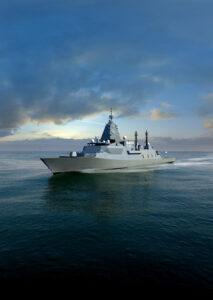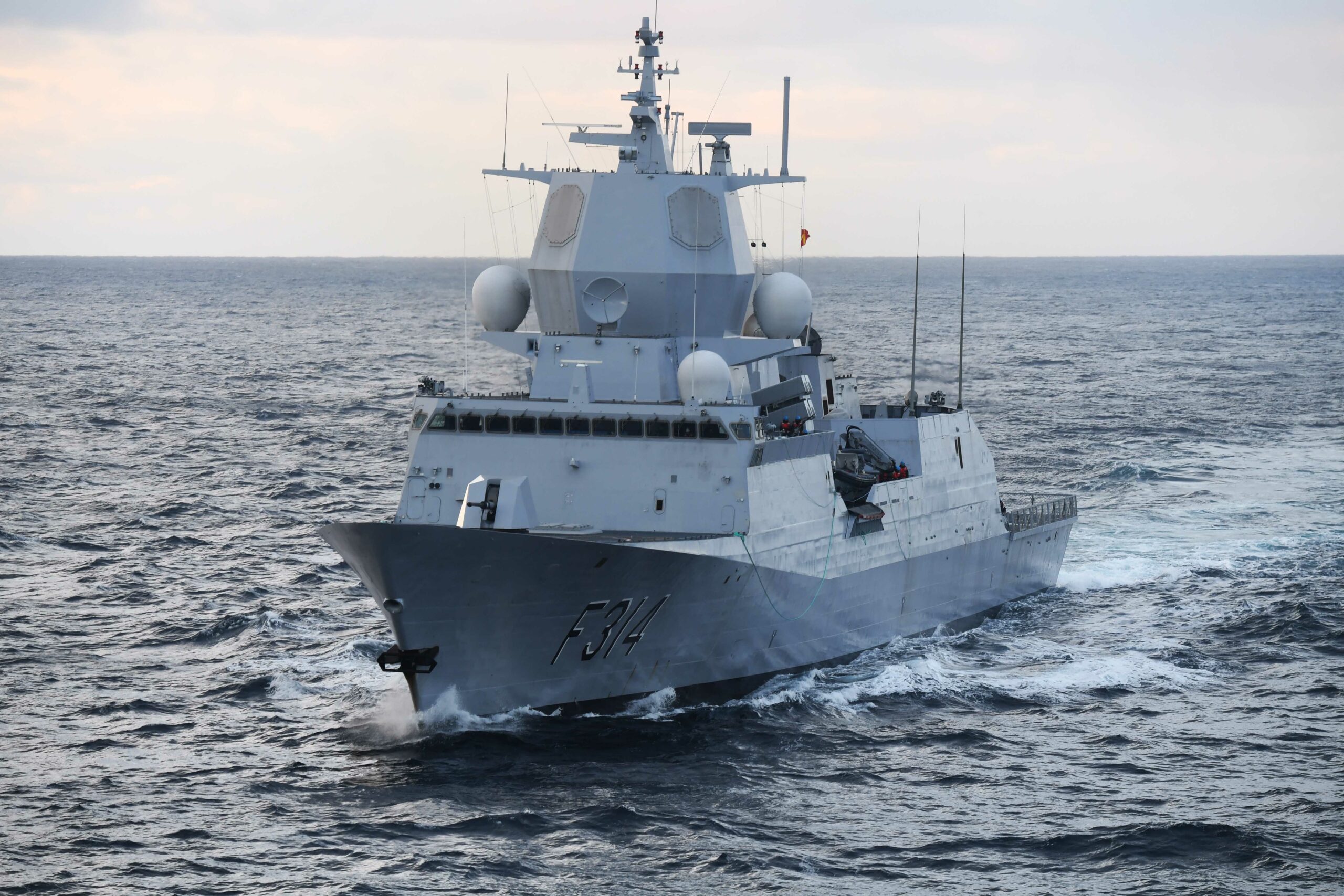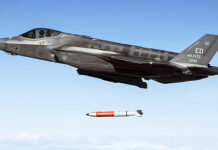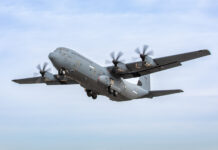The UK Royal Navy’s Type 26 frigate is designed specifically to address the anti-submarine warfare (ASW) threat. Given the continued increase in the ASW threat, the frigate’s design has wide appeal.
For Western navies operating in the Euro-Atlantic theatre, the core tasks of traditional, high-end naval warfare hold enduring importance today. The operational presence of Russian surface action groups, featuring new frigates and the combat-proven Kalibr long-range anti-ship/land-attack sea-launched cruise missile (SLCM), underlines the need for anti-surface warfare (ASuW) capability. Kalibr and other Russian cruise and ballistic missile capabilities point to the importance of enhancing anti-air warfare (AAW) capability, plus integrated air and missile defence (IAMD) when considering the robust activities of Russian maritime aviation across the region.
The Russo-Ukraine war has underscored the territorial risk in the land domain, meaning that amphibious and wider littoral capabilities must be honed to deter and defend against any threats to, for example, NATO member state territories on the alliance’s northern flank.
Underpinning these threats is the underwater domain. Russian submarine Euro-Atlantic presence ranges from under-ice activity in the High North down to operations in the congested waters of the Eastern Mediterranean, and above critical seabed infrastructure and below critical sea lines of communication (SLOCs) in between. Russian submarine activity presents probably the biggest strategic, operational, and tactical challenge for NATO and partner navies.
New Russian boats are increasingly quiet and increasingly capable (including carrying Kalibr): they are also being operated more effectively, regularly, and widely across the region, and in greater numbers.

Tackling the complexity of the ASW threat requires a layered approach. NATO’s major submarine operators – especially the nuclear-powered submarine (SSN) navies of France, the UK, and the US but also the various high-end diesel-boat drivers – are working increasingly closely to build integrated underwater domain coverage. In the air, the US, UK, and Norway are P-8A Poseidon operators, with Germany coming next.
New, emerging technological concepts such as ASW barriers built around uncrewed system capabilities like gliders, autonomous underwater vehicles (AUVs), and extra-large uncrewed underwater vehicles (XLUUVs) are designed to be integrated with crewed sub-surface, surface, and air platforms, and to implement sonar detection concepts like multistatics, to address the submarine threat (especially across key choke points like the Greenland-Iceland-UK (GIUK) or Bear Island gaps).
The last layer, but certainly not least, is the surface ship. Many NATO navies are developing new multipurpose frigates with a focus on ASW. One of the most prominent is the UK Royal Navy’s (RN’s) Type 23 City-class frigate.
Ahead of its Time
In some senses, Type 26 was ahead of its time. Work on what was billed from the outset as a frigate designed from the hull up as an ASW platform began at a time when the Russian ASW threat was only just beginning to re-emerge. Today, the fact that the Type 26’s broader Global Combat Ship (GCS) design concept has been downselected for the Royal Australian Navy’s (RAN’s) Hunter-class future frigate and the Royal Canadian Navy’s (RCN’s) Canadian Surface Combatant (CSC) programme is testament to what Type 26 brings as an ASW platform designed to operate in the high-end naval warfare fight. Indeed, other countries may follow suit.

In March 2010, the Type 26 programme’s assessment phase got underway, with a design contract award to BAE Systems. A demonstration phase contract followed in April 2015, with a build contract for the first three ships awarded in July 2017.
From the RN’s perspective, given the rapidly growing and changing nature of the Russian submarine threat, it seems prescient to be preparing to receive into service a platform that brings primary focus on ASW, while still having the multi-mission capability common in contemporary frigates and certainly required for today’s complex, integrated high-end fight. For the navy right now, commencement of Type 26 deliveries probably cannot start fast enough.
Eight Type 26s are replacing the eight ASW-focused Type 23 Duke class frigates. Four Type 26s are currently in build. Lead ship Glasgow entered the water on 2 December 2022, is due for delivery to the RN in the mid-2020s, and to enter service in 2028. In oral evidence given on 31 January 2023 to the UK House of Commons Defence Committee (HCDC), Commodore Stephen Roberts – the RN’s Type 26 programme senior responsible owner – said that “[the RN is] expecting the ship to sail for its first sea trials sometime in 2024,” prior to continuing outfitting work.
As regards overall programme delivery dates, Cdre Roberts explained that ships will be entering service on a drumbeat of 12 to 18 months after the first ship, with the final ship arriving in 2035. Build progress with ship two, Cardiff, is continuing. On 21 June 2023, shipbuilder BAE Systems announced that the forward section had emerged from the build hall in Govan, Scotland. The company’s statement added that the aft section would follow in the coming days, as the yard prepares to join the ship together outside on Govan’s hardstanding.
Cardiff is scheduled for floating off in 2024. Ship three, Belfast, is in build.
In November 2022, BAE Systems was awarded a contract to build the final five ships. The keel for the first ship of this second batch, Birmingham, was laid on 4 April 2023. BAE Systems said, in its statement, that Type 26 build work is expected to be completed by the mid-2030s. Going forward, construction of a new shipbuilding hall at Govan will enable ships three to eight to be assembled undercover, and thus not vulnerable to weather-driven delays, the statement added.

The multi-mission options within the 8,000 tonne full-load displacement Type 26 are reflected in its modular design and build, with a 24-cell Lockheed Martin Mk 41 vertical launching system (VLS) installed to enable a range of missile-based capabilities to be carried. The UK’s investment in the Kongsberg/Raytheon Naval Strike Missile (NSM) provides one option here. AAW capability is provided by two 24-cell VLS launchers carrying the MBDA CAMM (known as GWS 35 Sea Ceptor in RN Service) air-defence missile. The flight deck is large enough to take a Chinook helicopter. A modular payload area can accommodate a mix of up to ten 20 ft ISO shipping containers, maritime unmanned vehicles, or small boats including rigid-hull inflatable boats (RHIBs).
Of course, the ASW capability stands out. The hull, machinery, and electrics are designed for enhanced acoustic quieting. Sub-surface sensing capability is provided by the Ultra Electronics Type 2150 medium-frequency hull-mounted sonar and the Thales Sonar 2087 low-frequency active/passive towed sonar array. The two medium helicopters slated for embarkation – the AW101 Merlin HM2 or AW159 Wildcat HMA2 – provide the organic air capability, including ASW.
Making Progress
Naturally, the build progress is good news for the navy. Speaking at the RN’s ‘First Sea Lord’s Seapower Conference 2023’ – co-hosted by the RN, the Council on Geostrategy, and King’s College London at Lancaster House, London in May – First Sea Lord and Chief of Naval Staff Admiral Sir Ben Key noted that the decision to award the contract for the last five Type 26s was one of several bits of procurement ‘good news’ for the navy over the last 12 months, with other such news including new submarines and support ships, and vessels designed to tackle hybrid risks (including threats to critical undersea infrastructure).
Pointing to the platform’s flexibility, Adm Key noted that its Mk 41 VLS fit “will enable potential use of a large variety of current and future anti-air, anti-surface, ballistic missile defence, and strike missiles”.
The procurement activity in recent years, including of Type 26, will deliver new capability in the coming years. “The next decade is one of real change for the RN; the investment is hugely welcome across a spread of capabilities,” said Adm Key.
Building a high-end specification, high-end capability platform like Type 26 does not come cheap. In modern RN terminology, high-end platforms like Type 26 are referred to as ‘exquisite’ systems, but the navy notes in turn that ‘exquisite’ systems are needed to defeat ‘exquisite’ threats – like that posed by Russian submarines. Here, Type 26 will deliver a core military task that is of the highest politico-strategic importance for the UK – ASW protection of the UK’s two strategic deterrents, the nuclear-powered ballistic missile submarine (SSBN)-based nuclear deterrent and the aircraft carrier-based conventional deterrent. “The primary purpose of Type 26 is to protect the continuous at-sea nuclear deterrent and the carrier strike group, so [the frigate] will be optimised for the North Atlantic and for blue water operations,” said Cdre Roberts. Thus, the evident nature of the ASW threat raises the question of balancing cost against value for money, including quantity versus quality in platform numbers.

In the former context, Adm Key explained, “As we watch the increasing deployment by Russia of their most modern submarines, some of the very quietest in the world, you would expect me to be investing in the cutting-edge technology anti-submarine capabilities that allow us to detect, find, and if necessary defeat them,” “This is not cheap – but I don’t see coming second in the theatre ASW battle as a desirable option,” he added. In the latter, Adm Key continued, “Clearly, I would welcome more ships, but that cannot be at the expense of being able to undertake the most complex tasks.”
The relatively limited number of RN surface ships – a number that has reduced dramatically since the end of the Cold War – down to a force level of 19 destroyers and frigates – is certainly a focus area for the RN, in terms of improving availability in general. As regards to Type 26 availability in particular, the RN is already looking to do what it can to bring forward the in-service date for first-in-class Glasgow.
Cdre Roberts told the HCDC that the RN has about a dozen personnel posted onboard Glasgow to begin understanding the ship and its systems, develop standard operating procedures for the ship class, and engage with industry with an aim to advance development and planning. Such activity enables the RN to pursue any opportunities there may be to bring the delivery date forward.
Broader Developments
The strategic, operational, and tactical importance for navies of re-building high-end ASW capability, and the relevance of Type 26 to this requirement, is demonstrated by the fact that the RAN’s and RCN’s future frigate programme requirements are being met by derivatives of the Type 26-based GCS design.
Given current demand for ASW capability and the fact that select navies, for example in the Euro-Atlantic theatre, are looking at frigate replacement programmes, the UK believes wider-still interest in the design may exist. Speaking at the ‘First Sea Lord’s Seapower Conference 2023’, Minister for Defence Procurement James Cartlidge said “At an industrial level, Type 26 continues to garner interest in the export market.”
For the RAN, nine Hunter-class frigates will be delivered, starting in the late 2020s. For the RCN, 15 frigates will be delivered under the CSC programme, starting in the early 2030s. Both countries will be building their ships in-country.
For the RAN, Australia’s recent Defence Strategic Review (DSR) – published in April 2023 – put forward some new principles that should underpin RAN and wider Australian Defence Force future force structures. For example, to enhance maritime power projection and build layered deterrence and defence through long-range offensive capability that can strike at and from the sea, the RAN “must have enhanced lethality – including through its surface fleet”, the DSR stated.
Prior to the DSR, the RAN had already moved to enhance such lethality for the Hunter-class frigates, with the acquisition of NSM and Raytheon’s Tomahawk land-attack SLCM to provide land-attack and anti-ship strike capability at different ranges (both missiles provide both capabilities, but Tomahawk brings greater reach).
The DSR underscored the need to assess whether the frigate fleet’s strike capability can be enhanced further still, however. Two core strands in the requirement for this assessment are to enhance capability to protect Australia’s extended SLOCs, and to enhance capability and operational complementarity with the RAN’s new SSN capability, to be delivered under the SSN-AUKUS submarine programme within the trilateral Australia/UK/US AUKUS strategic partnership.
Thus, the RAN will be conducting an independent assessment of the surface fleet’s force structure, force mix, and overall capability, including weighing the balance between the RAN’s larger and smaller surface ship numbers. Review work is already underway, and is scheduled to be completed in the third quarter of 2023.
For the RCN’s CSC, media reports at Euronaval in October 2022 noted that Canada aimed to complete preliminary design review work by early 2023, with production activities set to begin in early 2024.
Future Requirements, Future Opportunities
The high-end nature of the Type 26 capability and the high-end nature of the ASW threat limits the number of navies able to acquire the capability to meet this threat. Yet increasing submarine activity in certain locations around the world means that some navies are in a geostrategic position that dictates a need for specific focus on ASW capability.
The Royal Norwegian Navy (RNoN) is one such navy. The RNoN is beginning to assess requirements to replace its four in-service Fridtjof Nansen-class ASW-focused frigates. First, intensifying submarine activity in northern Europe means that Norway may increase its frigate numbers. On 7 June 2023, Norway’s Ministry of Defence published ‘The Military Advice of the Chief of Defence 2023’. In the report, Chief of Defence General Eirik Kristoffersen recommended that Norway should procure up to six new frigates, buying a multipurpose platform delivering ASuW and AAW capability but prioritising ASW.

Second, Norway will be looking to use an international design for its future frigates, as it did when teaming up with Spain’s Navantia and Lockheed Martin from the US for its Spain-built, Aegis combat system-capable Fridtjof Nansen ships. Speaking at the ‘First Sea Lord’s Seapower Conference 2023’, the RNoN’s Chief of Navy Rear Admiral Rune Andersen said that cost challenges and the need to enhance innovation in future designs and capabilities for high-end platforms mean Norway must seek a design that is not unique to the RNoN, as well as seeking deeper integration with like-minded countries on platform acquisition.
While Norway is not yet at the stage where it needs to downselect a future frigate design, relevant options could include (amongst others) the Spanish Navy’s F-110 and the US Navy’s FFG-62, as well as Type 26 itself.
The RNoN remains convinced that the need for credible high-end ASW capability remains clear. Speaking at the Royal United Services Institute’s (RUSI’s) Seapower conference, held in London in April, Rear Adm Andersen said that while there have been questions over the performance of Russian ground forces in Ukraine, “we don’t transfer that to some of the maritime capabilities that have been prioritised for several years, in particular the submarine fleet, which is modern and capable. We don’t underestimate the quality or effectiveness, and we see that in our daily operations”.
Dr Lee Willett











